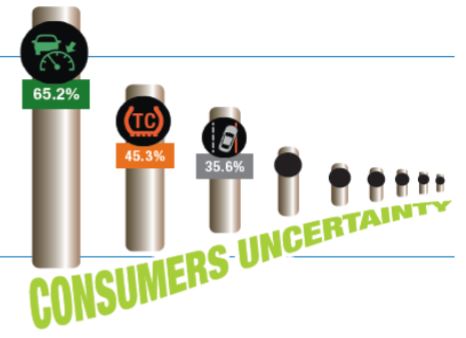 A new study from the University of Iowa found that most drivers expressed uncertainty about how vehicle safety technologies work. The survey also showed that 40 percent of drivers report that their vehicles have acted or behaved in unexpected ways.
A new study from the University of Iowa found that most drivers expressed uncertainty about how vehicle safety technologies work. The survey also showed that 40 percent of drivers report that their vehicles have acted or behaved in unexpected ways.
The study found that a majority of respondents had heard of, been exposed to, or interacted with at least one of the nine vehicle safety features studied, but expressed uncertainty about all of the technologies.
Consumers reported they least understood adaptive cruise control (65%) and lane departure warning systems (36%). They were uncertain about features that have been standard in American cars for years – such as anti-lock braking systems and tire pressure-monitoring systems (45.3%), according to the survey.
40% experienced a situation in which their vehicle acted in a way they were note expecting.
The safety technologies included in the study were:
- Back-up Camera: Received the highest rating for what owners would buy when buying a new car.
- Adaptive Cruise Control: maintains the speed set by the driver and a pre-set following distance. Only 35% of all survey had any knowledge of adaptive cruise control.
The study, conducted by the University of Iowa Transportation and Vehicle Safety Research Division, examined drivers’ knowledge of vehicle safety systems, as well as their understanding and use of defensive driving techniques. The study combined a literature review, the input of industry and academic experts in human factors research with an in-depth survey of more than 2,000 adult drivers across the United States.
The average model year of vehicles reported by the National Survey dataset was 2006, which is slightly newer than the average model year of vehicles in the U.S. fleet which is approximately 11.5 years.
Read report.
For more information on automotive safety technologies go to MyCarDoesWhat.org.